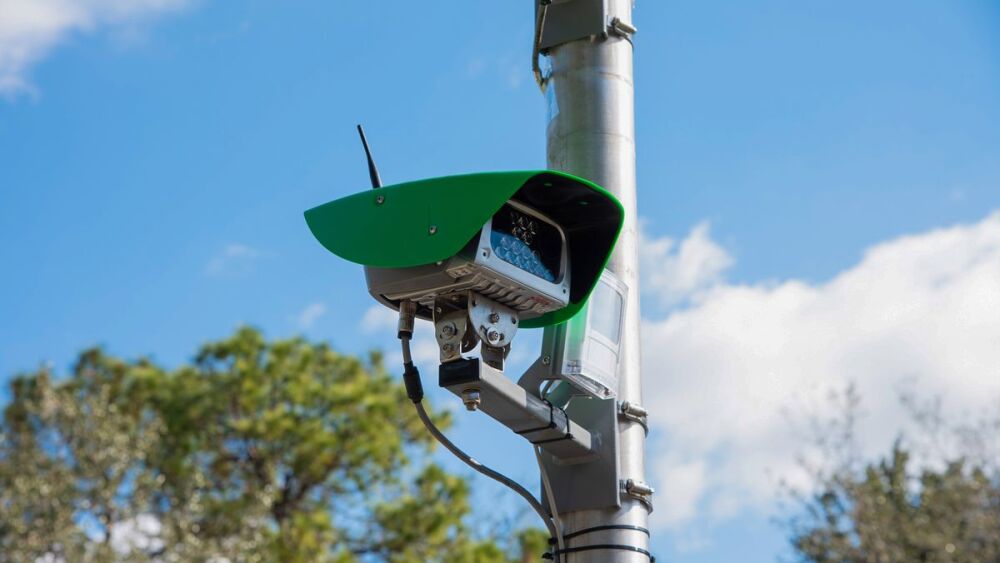Sponsored by Jenoptik
By Kenny Sokan for Police1 BrandFocus
In a race to counteract the effects of greenhouse gases on the environment, businesses and governments around the world are implementing green initiatives. Because transportation is a major source of air pollution, in recent years a wave of government agencies across Europe have added low or zero-emission zones in cities in these efforts to reduce exhaust gas emissions and improve air quality within those zones, in order to protect public health. Clean air zones may restrict certain heavy-duty vehicles (i.e., trucks) from the city center, prohibit older polluting vehicles or specify that all journeys must be within a certain speed limit range to reduce excess exhaust emissions.
The Swedish environmental zones implemented in 1996 in the cities of Stockholm, Gothenburg and Malmo could be considered the first such zones. Today, hundreds of cities across the European Union and the U.K. have them.
While the U.S. does not currently have any low-emission zones, last year the city of Santa Monica, California, laid out a plan for the first zero-emission delivery zone to go into full effect by 2028. The zone will include a square-mile area of Santa Monica’s downtown corridor where all goods delivered within will be required to be transported by zero-emission vehicles. Similarly, in 2019, San Francisco laid out an “Electric Vehicle Roadmap” that would transition vehicles in the city off fossil fuels by 2040.
These plans are nearly 10 and 20 years from going into full effect. However, technology used in more than 80 countries to help enforce green traffic laws is breaking into the U.S. market, and its benefits go beyond helping the environment.
With the VECTOR integrated ALPR cameras produced by Jenoptik, U.S. governing bodies can do more than just improve air quality for the communities they serve – they can also use them to boost overall traffic and public safety.
How integrated ALPR cameras also help increase civil security
According to the EPA, transportation is the largest contributor to greenhouse gas emissions, accounting for about 28% of the U.S. total. Studies show that high speeds and the constant acceleration, deceleration and braking of vehicles increases the release of emissions like hydrocarbons, nitrogen oxides, carbon monoxide, nitrogen oxides, hydrofluorocarbons, particulate matter and more.
More constant, steady speeds and fewer heavy-duty vehicles traveling in traffic-congested areas are proven to improve air quality significantly. Jenoptik’s VECTOR cameras are used to control traffic flows with speed monitoring and vehicle type restriction enforcements, as well as to enforce “green or fast lane” use.
The same speed monitoring cameras, which can be placed along roadways and mounted in police vehicles, can help law enforcement better protect the communities they serve. The cameras are capable of automatically capturing vehicle license plates across several lanes of traffic simultaneously, even at high speeds. They are equipped with a GPS unit, compass, accelerometer and three light sensors, and they are capable of adapting optimally to different weather conditions to deliver clear, high-definition images day and night.
Jenoptik’s VECTOR integrated ALPR cameras can also differentiate between vehicle classes and can read and record license plates. They can help with motorway control and detect vehicles entering and leaving borders and parking systems.
The cameras use TraffiData analysis software to process and analyze the data they collect in real time, automatically reporting suspect vehicles. While the TraffiData software does the heavy lifting of cross-checking hotlists for suspect vehicles and identifying other potential threats, law enforcement can employ proactive policing measurements and save on time and money that can be better directed elsewhere.
The cameras can be customized by agencies to fit their exact needs. They are fully integrable with all standard interfaces and databases and quick to install, configure and operate.
The application of Jenoptik’s VECTOR integrated ALPR cameras can help law enforcement reduce crashes, monitor vehicles of interest, identify stolen vehicles more efficiently and better protect access roads for schools and government buildings, making the communities they are stationed in safer for all residents.
Jenoptik has been equipping police vehicles with cameras since 1955 and was the first to develop and market ALPR technology in 1979. To date, the company has delivered over 30,000 cameras.
A leader in the photonics industry, the company is also a trusted partner of NASA and has collaborated with the agency on various space projects, including designing and manufacturing camera lens assemblies for the Mars 2020 Rover.
Advance environmental sustainability and improve law enforcement operations
Jenoptik’s VECTOR integrated ALPR cameras are prime examples of how green initiatives can be compatible with police operations and can even enhance police efforts in public safety. Indeed, multiple benefits can be delivered from one platform, because the compliant driving behaviors will lower emissions, reduce casualties and provide a powerful intelligence tool for operators. By incorporating Jenoptik’s VECTOR integrated ALPR cameras, police departments can begin to establish themselves as leaders in environmentally sustainable policing while also streamlining operations. The cameras help ensure reduction of greenhouse gas emissions – improving air quality and environmental sustainability – while also improving the tracking of criminal activity for police with the cameras’ speed monitoring and ALPR technology.
Because VECTOR integrated ALPR cameras help improve public safety and promote climate protection, it is possible to secure funding to purchase the cameras through grants based on improved community policing and pollution prevention. A number of federal grant programs that may be of use, such as EPA or U.S. Department of Transportation grants, as well as Community Policing Development opportunities. Check out PoliceGrantsHelp for more information on potential funding sources for this technology.
Visit Jenoptik for more information.



